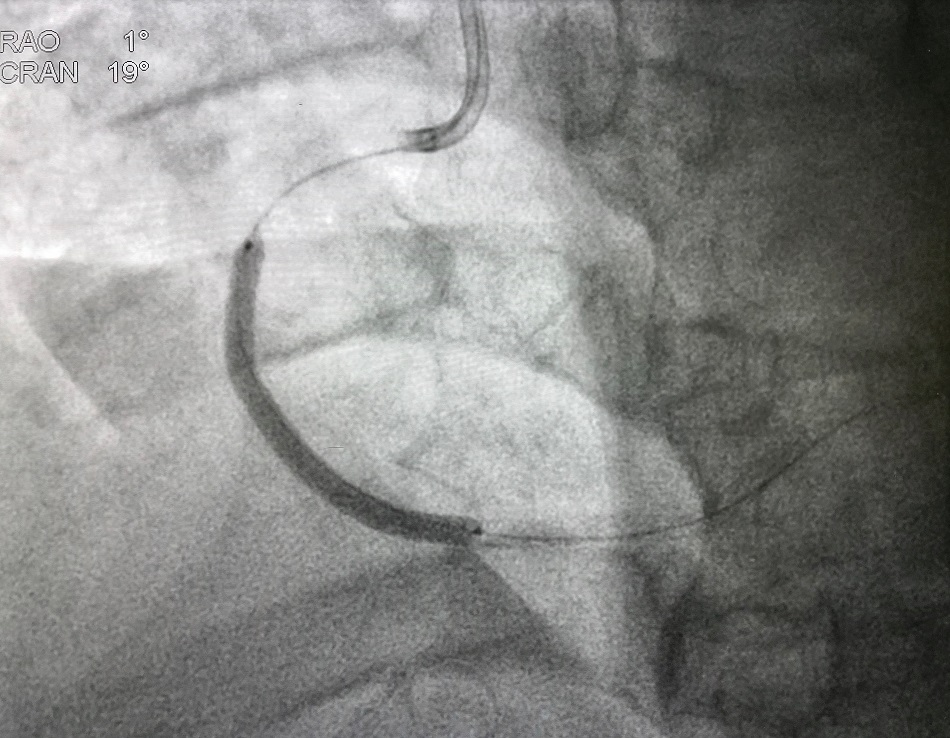By Kalwinder KaurNov 25 2012

Image Credit: BelezaPoy/Shutterstock.com
The clinical application of the CorPath® 200 System was discussed during an annual meeting of Transcatheter Cardiovascular Therapeutics by leading interventional cardiology experts. During the meeting, it was suggested that robotic-assisted percutaneous coronary interventions (PCI) are safe to use, and have enhanced the precision and control over the stent, balloon, and guidewire (traditional methods of surgical intervention to help widen narrow arteries). Experts also emphasized the fact that robotic PCIs are certain to revolutionize traditional cardiovascular surgery as we know it.
Percutaneous Coronary Intervention – Problem and Solution
Percutaneous intervention without the use of catheters involves the use of probes for biopsy, cannulae, and needles for the purpose of conducting surgery for the treatment of tumors and various drug delivery methods. Precise targeting is challenging due to changes in the patient's posture, breathing patterns, and force applied on tissues during the procedure, all of which make the accurate placement of stents difficult.
Apart from the already discussed difficulties in the intervention procedures, cardiologists are exposed to high volumes of radiation. This is known to be dangerous and may put them at a higher risk of serious health issues such as cancer and cataracts later on in life.
To overcome this grave problem, recent studies have used robotic arms that are based on 3D intraoperative imaging techniques to function inside MRI or CT machines. These pneumatically actuated arms use MRI-compatible encoders for joint sensing.
About the CorPath® 200 Robotic-Assisted PCI System
The CorPath® 200 Robotic-assisted PCI System is the first robotic-assisted technology for coronary intervention techniques. This medical technology allows doctors to perform the accurate robotic placements of balloon/stent catheters and coronary guidewires from a seated cockpit. Thus, the physician can devote their full attention to the patient’s physiology without any discomfort or health risk to the patient, or the doctor, with a technique that offers full procedural control.
The technical efficacy and safety of the CorPath® 200 System was evaluated in the first-in-human clinical study. The study held a 100% clinical success rate of the system with a less than 30% final diameter stenosis following the insertion of a stent/catheter. Moreover, there was no evidence of any major adverse events after discharge and at a 30 day follow-up.1
Features and Benefits
The key benefits of the CorPath® 200 System are:
- Easy to install
- Simple joystick and touch screen controls
- Enhanced visualization from the shielded cockpit
- Distinct 1mm device movements
- Sub-millimeter measurements
- Precise manipulation of guidewire
- Placement of stent at robotic precision
- Reduced radiation exposure
- Prevents occupational hazards
- Ergonomic design for physicians
-
Current Medical Robot Technology and Future Research
The use of robotics in clinical procedures is a major breakthrough in the field of medicine. A lot of research is presently being performed on more medical robots that can assist in different clinical procedures that are considered intricate and invasive. Some are discussed below:
- TraumaPod – A telerobotic, semi-autonomous surgical system, which has successfully performed shunt placement and bowel closure on a phantom without the help of a human.
- RAVEN and MiroSurge – These two surgical robots are used for performing endoscopic surgery. RAVEN II is a remotely operated laparoscopic system and MiroSurge is a versatile system with different control modes, arm-mounting locations, and several surgical domains.
- HeartLander – This medical technology is a minimally invasive robot that is designed for procedures such as epicardial atrial ablation, heart cell transplantation, and intrapericardial drug delivery.
- NeuroArm and MrBot – The neuroArm is a neuro-surgical robot guided by MRI, with two arms actuated through piezoelectric motors while the MrBot is designed for accessing the prostate gland using MRI data.
- Amadeus – A laparoscopic surgical robot system with four arms designed to assist in teleoperation in the case of long-distance surgeries.
- da Vinci Xi – A surgical robot controlled by a surgeon from a console. The system is used for prostatectomies, cardiac valve repair, and gynecologic surgical procedures.
Surgical Robot Challenge is an annual event organized by professor Guang-Zhong Yang, director, and co-founder of the Hamlyn Centre of Robotic Surgery and his colleagues. This competition brings in many first-in-human studies which only demonstrates the momentum behind medical robotics development. The event was part of the 2019 UK Robotics Week and demonstrated that the field of medical robotics has plenty of potentials and will not cease to amaze us in the years to follow.
References and Further Reading
- http://www.corindus.com/Clinical/CorPathPreciseClinicalTrial.aspx
- Beasley.R.A. (2012) Department of Engineering Technology and Industrial Distribution, Texas A&M University, USA. Journal of Robotics; Volume 2012. doi: 10.1155/2012/401613.
- Robotic Assisted PCI
- Corindus Robotic-Assisted Coronary Angioplasty System to be Discussed at TCT 2012
- The Hamlyn Symposium on Medical Robotics (2019): https://www.ukras.org/wp-content/uploads/2019/06/proceedings_HSMR19-MK-reduced.pdf
This article was updated on 6th February, 2020.
Disclaimer: The views expressed here are those of the author expressed in their private capacity and do not necessarily represent the views of AZoM.com Limited T/A AZoNetwork the owner and operator of this website. This disclaimer forms part of the Terms and conditions of use of this website.